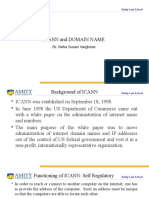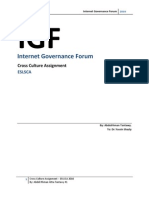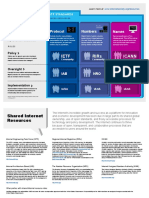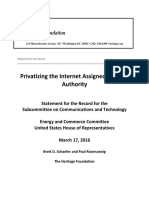0% found this document useful (0 votes)
9 views2 pagesICANN Overview
The Internet Corporation for Assigned Names and Numbers (ICANN) is a nonprofit organization established in 1998 to manage the Internet's unique identifiers, including the Domain Name System and IP addresses. It transitioned IANA stewardship from the U.S. government to a global community in 2016 and has a governance structure that includes a Board of Directors and various advisory committees. Recent initiatives include aligning organizational objectives with strategic direction and addressing challenges related to domain name expansion and governance efficiency.
Uploaded by
zatatechnologies27Copyright
© © All Rights Reserved
We take content rights seriously. If you suspect this is your content, claim it here.
Available Formats
Download as DOCX, PDF, TXT or read online on Scribd
0% found this document useful (0 votes)
9 views2 pagesICANN Overview
The Internet Corporation for Assigned Names and Numbers (ICANN) is a nonprofit organization established in 1998 to manage the Internet's unique identifiers, including the Domain Name System and IP addresses. It transitioned IANA stewardship from the U.S. government to a global community in 2016 and has a governance structure that includes a Board of Directors and various advisory committees. Recent initiatives include aligning organizational objectives with strategic direction and addressing challenges related to domain name expansion and governance efficiency.
Uploaded by
zatatechnologies27Copyright
© © All Rights Reserved
We take content rights seriously. If you suspect this is your content, claim it here.
Available Formats
Download as DOCX, PDF, TXT or read online on Scribd
/ 2























































































